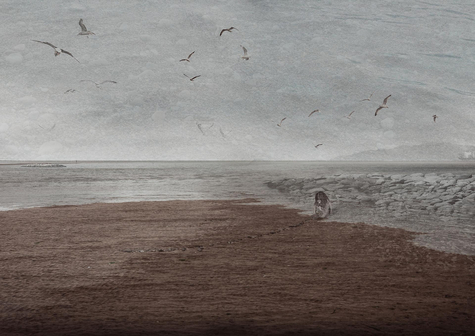Blake Allen
- Contact
- LinkedIn
Coastal Accretion
Growing a new cultural landscape through resilience, aesthetics and time to address coastal Sea Level Rise in Metro Vancouver, Canada
Due to the consequences of climate change, Metro Vancouver in British Columbia, Canada is projected to experience 1m of SLR by the year 2100.
Coastal Metro Vancouver’s growth over the past 10,000 years was created through sedimentation and deltaic processes of the Fraser River. These natural processes shaped the landscape, as well as the histories and cultures of the Coast Salish First Nations peoples that have inhabited the landscape since time immemorial. With the introduction of Western society into the region, a new relationship with nature was imposed onto the landscape, where controlling natural systems and defining borders was an extension of their society. Today, the legacy of this period is still dominant, and is typified by sprawling and outdated infrastructure, urban development growth, and jurisdictional boundaries. This greatly stagnates coastal water management measures today. The risk this poses for the region is vast, and threatens the natural, built, and cultural landscapes of Metro Vancouver.
This project places emphasis on the transition spaces between land and water – the convergent, dynamic points of exchange and interaction between daily flooding and dryness. These sites have the capacity to connect, given their position at the intersection between land/society, and water/nature. I believe these are the critical spaces of SLR resilience in Metro Vancouver due to their position, and their ability to attenuate waves and mitigate against flooding. Three sites were selected to develop resilience, and were selected based on their urgency in SLR management, their unique ecotypes based on their proximity to the Fraser River, and their distinct cultural contexts: sandflats, marsh and mudflats. These landscapes have the potential to adapt to SLR, although in the current condition of control when combined with SLR and storms, are at risk of being lost entirely.
Throughout this project, resilience is made by using the existing natural systems and qualities of the landscape to inform and lead growth towards resilience. Through harnessing the (currently underutilized or lost) materials of the Fraser River, that exist as a combination of sand, silt, clay, gravel and wood at various points throughout the river channel today, new opportunities arise to grow these existing coastal landscapes. Within each site chosen in the project, new potentialities of the landscape are shown. These are interactive forms of layered resilience - showing how the influence of society can be harnessed in either directly producing that resilience (mudflats), experiencing resilience (marsh) or interacting with resilience (sandflats) that attenuate and dissipate wave energy offshore through the use of various breakwaters, reefs, and wetlands. When combined, the natural systems of the landscape interact with these interventions to create a new landscape, new forms, and new co-created languages of resilience.
The resulting proposal is formed through decades of landscape growth, as well as generations of new cultural practices and experiences. I hope other people also see themselves in this project, and that new interpretations of this methodology could be designed based on differing local contexts and cultures. SLR contains the potential for society to reconnect to nature through time. Given the extremely long-term nature of these challenges, this is a landscape I will never know – but the one that I would hope to help initiate.
Afstudeerdatum: 24 augustus 2022
Afstudeercommissie: Roel Wolters (mentor), Hannah Schubert, Remco van der Togt
Toegevoegde leden t.b.v. het examen: Jana Crepon, Cees van der Veeken













